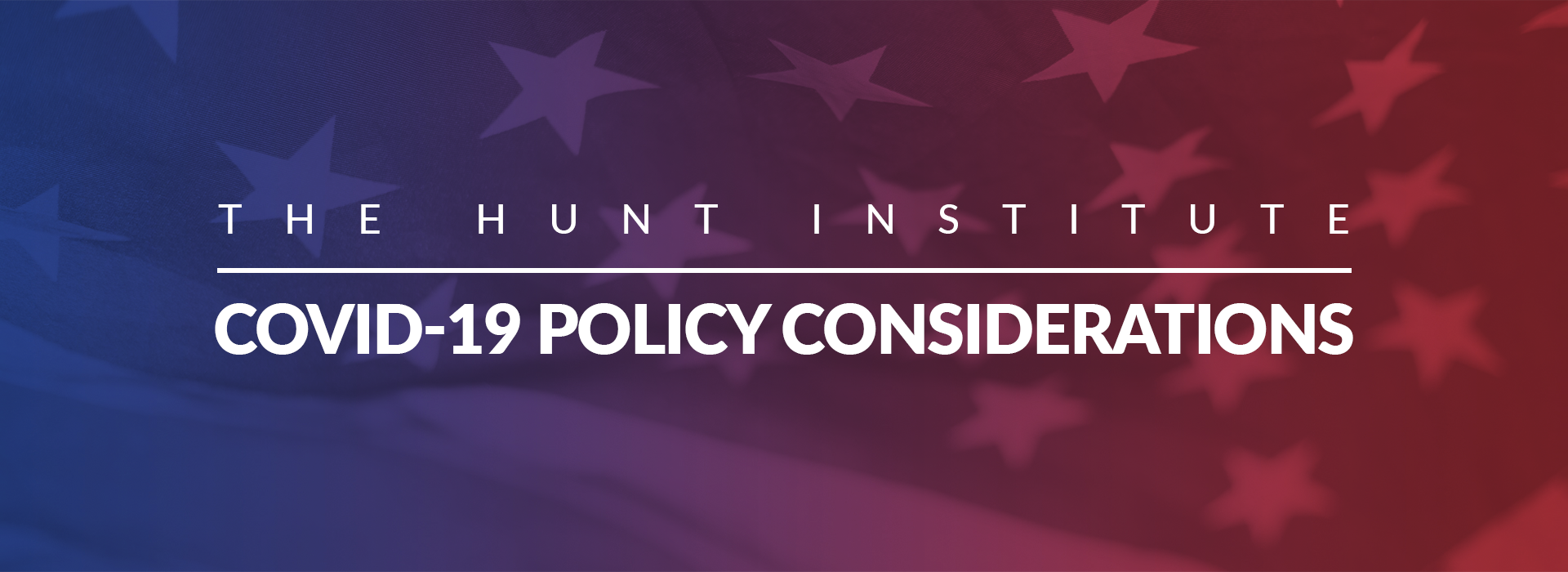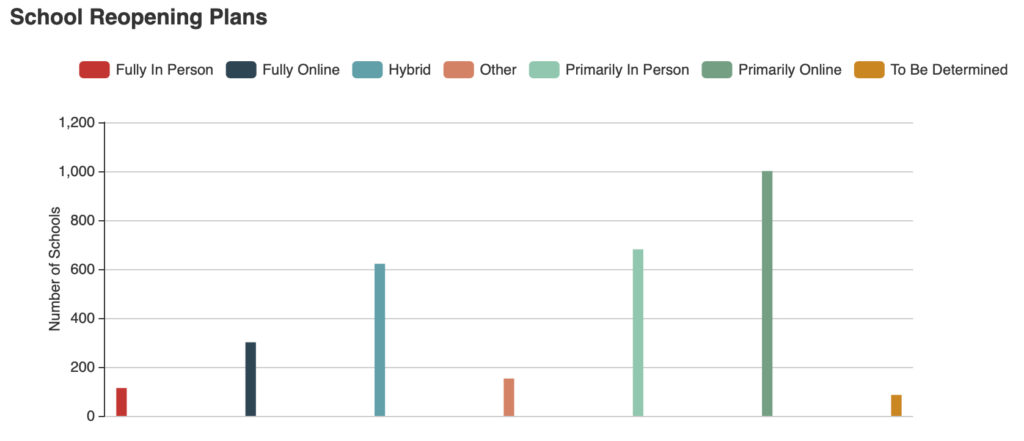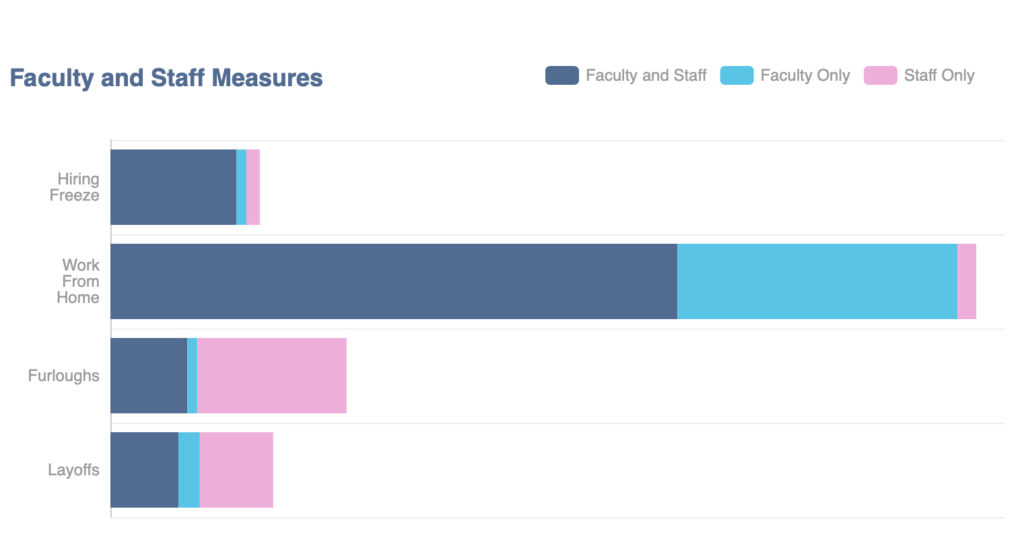

November 11, 2020
The COVID-19 pandemic has become a major disruption to institutions of higher education (IHEs) across the country, with many colleges and universities questioning whether it is safe to resume in-person instruction. This question in higher education remains uniquely complex, as college campuses are composed of a diverse population of students, faculty, and staff with different ages, health conditions, and socio-economic backgrounds. As the pandemic forces higher education stakeholders to face difficult decisions surrounding reopening campuses, there have been a mix of responses in approaches to reopening.
A number of higher education leaders have made the decision to reconvene at least part of the student body on and around campus. This creates questions about how IHEs plan to implement health and safety programs that will provide students with an effective test, tracing, and supported isolation (TTSI) program to mitigate the chance of widespread community infection of COVID-19.
The myriad of factors considered when reopening amid the COVID-19 pandemic included prioritizing the safety of students, faculty, and communities, as well as the quality of education delivered. With the fall 2020 semester underway, IHE reopening plans and structures have varied widely. Some institutions committed to providing full in-person courses, while many shifted to hybrid or a fully remote experience. According to The College Crisis Initiative (C2i) and Project PRONTO++, many school reopening plans have shifted to accommodate for some form of online learning. Furthermore, C2i has found a large increase in work from home accommodations for both faculty and staff. It is also important to note that significantly more IHEs have chosen to furlough or lay off only their staff members – as opposed to applying these policies to both faculty and staff.


Source: The College Crisis Initiative (2020). COVID-19 Data Dashboard https://collegecrisis.org/covid-19-data-dashboard/
Across the country, IHEs continue to examine data and the unique factors that impact their students, faculties, and operations to weigh options and best understand how to adapt during these challenging times.
While increased social distancing in dining halls, requirements for face masks, reduced density of on-campus housing, and various testing strategies have been put in place at hundreds of IHEs, case investigation and contract tracing remain important efforts and deserve the attention of higher education leaders.
As many IHEs reopened to provide traditional in-person learning, thousands of new coronavirus cases emerged and spread rapidly. With a lack of existing guidance for institutions to follow when responding to coronavirus cases, colleges and universities have adopted various approaches in regard to tracking and reporting coronavirus cases to students, faculty, and community members. Some universities, who were hoping to quickly identify cases and prevent broader outbreaks, have tested aggressively for the virus, detecting cases rapidly as students return to campus.
Even with strict regulations in place, IHEs who reopened saw a large spike in coronavirus cases when bringing students back to campus. Large and early outbreaks at dozens of colleges underscored the yawning gap between policy and enforcement, as well as the limitations of IHEs to control the behaviors of young students who are paying for both an academic and social college experience. IHEs have seen a large surge of undermining restrictions through off-campus behavior. Several campuses such as the University of North Georgia, the University of Notre Dame, and the University of North Carolina at Chapel Hill experienced a large surge of off-campus partying which resulted in the suspension of in-person courses.
As the pandemic continues to disrupt the “traditional college experience” for millions of students, higher education stakeholders should be ready to adapt and create a safe learning environment while also attempting to mitigate the risks associated with in-person instruction.
Partner with Health Department officials: Higher education stakeholders should consider developing a collaboration with health department officials that can be leveraged to inform the creation of a screening or testing strategy. This partnership will aid the purposes of surveillance, diagnosis, screening, or outbreak response, as suggested by the Centers for Disease Control. Testing strategies developed within this collaboration should be part of a larger ongoing COVID-19 prevention plan. Therefore, higher education stakeholders should develop a written plan that aims to consider the implementation of testing strategies and the action taken based on the results.
Educate and Promote Positive Behavior: Higher education stakeholders should educate students, faculty, and staff on when they should stay home or self-isolate in their living quarters. This can be encouraged by developing and promoting policies that allow sick individuals to stay home without the fear of repercussion. By removing the fear of repercussion, individuals will be more likely to stay home when experiencing coronavirus symptoms.
Promote Compliance: To promote compliance with returning students and mitigate the risk of off-campus functions that could spread coronavirus, institutions should consider building an accountability environment off campus. Success has been seen when collaboration exists between community law enforcement, colleges and universities, and health centers. Some cities and campuses have coordinated enforcement such as the City Council in Columbia, S.C., which amended their zoning code to penalize landlords for the off-campus parties held by the University of South Carolina students. Higher education stakeholders should act quickly to implement compliance measures they deem most effective for their institutions.